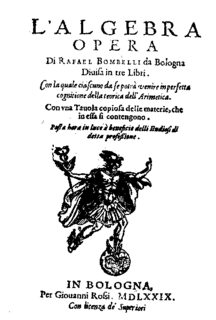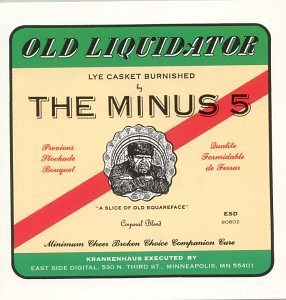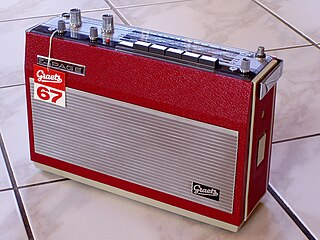The plus and minus signs, + and −, are mathematical symbols used to represent the notions of positive and negative, respectively. In addition, + represents the operation of addition, which results in a sum, while − represents subtraction, resulting in a difference. Their use has been extended to many other meanings, more or less analogous. Plus and minus are Latin terms meaning "more" and "less", respectively.

Process music is music that arises from a process. It may make that process audible to the listener, or the process may be concealed.
The plus–minus sign, ±, is a mathematical symbol with multiple meanings.
Plus−minus is a sports statistic used to measure a player's impact on the game, represented by the difference between their team's total scoring versus their opponent's when the player is in the game. In ice hockey, it measures a player's goal differential. When an even-strength goal or shorthanded goal is scored, the plus–minus statistic is increased by one ("plus") for those players on the ice for the team scoring the goal; the plus–minus statistic is decreased by one ("minus") for those players on the ice for the team allowing the goal. Power play or penalty shot goals are excluded. An empty net does not matter for the calculation of plus–minus.
The NHL Plus-Minus Award was a trophy awarded annually by the National Hockey League to the ice hockey "player, having played a minimum of 60 games, who leads the league in plus-minus statistics." It was sponsored by a commercial business, and it had been known under five different names. First given for performance during the 1982–83 season, Wayne Gretzky won the award the most times, with three. Gretzky also led the league once prior to the inception of the award. Bobby Orr has led the NHL the most times in plus-minus, with six, all prior to the inception of the award. The award was discontinued after being awarded to Pavel Datsyuk following the 2007–08 season.

Rafael Bombelli was an Italian mathematician. Born in Bologna, he is the author of a treatise on algebra and is a central figure in the understanding of imaginary numbers.
Jakob van Domselaer was a Dutch composer.

"5:15" is a song written by Pete Townshend of British rock band The Who. Part of the band's second rock opera, Quadrophenia (1973), the song was also released as a single and reached No. 20 on the UK Singles Chart, while the 1979 re-release reached No. 45 on the Billboard Hot 100.

Old Liquidator is the debut full-length album by American rock band The Minus 5. It was released in 1995 by East Side Digital Records. Recording sessions for the album were recorded simultaneously with their Hello EP debut. The sessions that produced this album and the following EP were followed up with The Lonesome Death of Buck McCoy, released in 1997.
The viola pomposa is a five-stringed instrument developed around 1725. There are no exact dimensions applicable to all instruments used under this name, although in general the pomposa is slightly wider than a standard viola. It uses four viola strings, tuned conventionally (C-G-D-A), with the addition of a high E string, giving it a greater range than the orchestral viola; the trade-off comes in a sound which is slightly more resonant than a violin. The viola pomposa is played on the arm and has a range from C3 to A6 with fingered notes. Using harmonics, the range can be extended to C8 depending on the quality of the strings.
Richard MacQueen Wellstood was an American jazz pianist.

The short dance (SD) was the first segment of an ice dancing competition from the 2010–2011 to the 2017–2018 seasons. It was approved in June 2010 by the International Skating Union (ISU). It merged the original dance (OD) and compulsory dance (CD), which were both discontinued. The ISU re-named the short dance to the rhythm dance (RD) in 2018.

Kurzwellen, for six players with shortwave radio receivers and live electronics, is a composition by Karlheinz Stockhausen, written in 1968. It is Number 25 in the catalog of the composer’s works.

Spiral, for a soloist with a shortwave receiver, is a composition by Karlheinz Stockhausen, written in 1968. It is Number 27 in the catalogue of the composer's works.
Prozession (Procession), for tamtam, viola, electronium, piano, microphones, filters, and potentiometers, is a composition by Karlheinz Stockhausen, written in 1967. It is Number 23 in the catalogue of the composer’s works.
Roderick Chadwick is an English classical pianist.

Plus-Minus, 2 × 7 pages for realisation, is a composition for one or several performers by Karlheinz Stockhausen, first written in 1963 and redrafted in 1974. It is Nr. 14 in the composer's catalogue of works, and has a variable performing length that depends on the version worked out from the given materials. The score is dedicated to Mary Bauermeister.
Cassandra Miller is a Canadian experimental composer currently based in London, England. Her work is known for frequently utilising the process of transcription of a variety of pre-existing pieces of music.
Bryn Harrison is a British experimental composer. His works have been widely performed by international ensembles and he was a recipient of the 2013 Paul Hamlyn Foundation Award for Composers. He is currently Reader in Composition at the University of Huddersfield.

Christgau's Consumer Guide: Albums of the '90s is a music reference book by American music journalist and essayist Robert Christgau. It was published in October 2000 by St. Martin's Press's Griffin imprint and collects approximately 3,800 capsule album reviews, originally written by Christgau during the 1990s for his "Consumer Guide" column in The Village Voice. Text from his other writings for the Voice, Rolling Stone, Spin, and Playboy from this period is also featured. The book is the third in a series of influential "Consumer Guide" collections, following Christgau's Record Guide: Rock Albums of the Seventies (1981) and Christgau's Record Guide: The '80s (1990).








